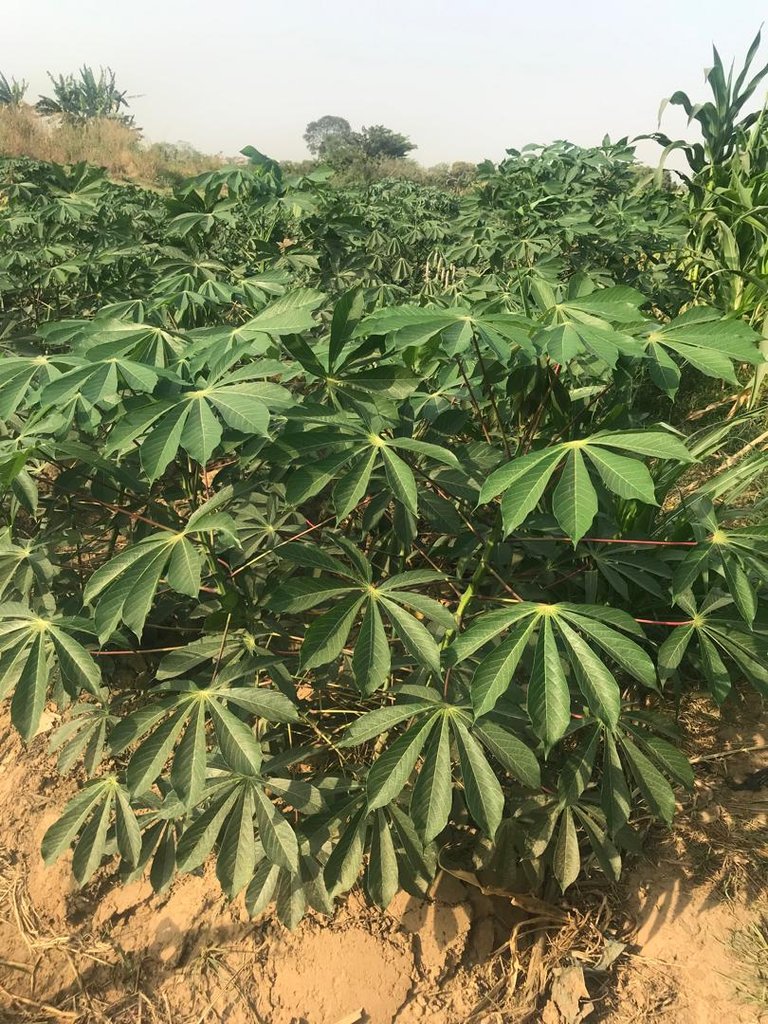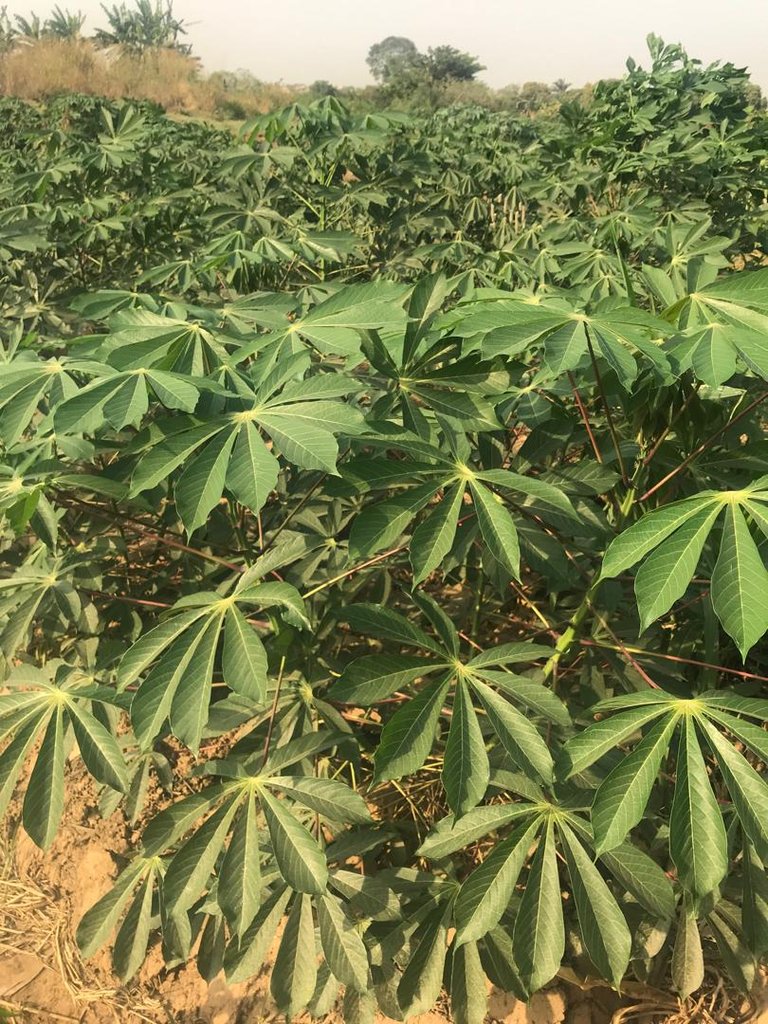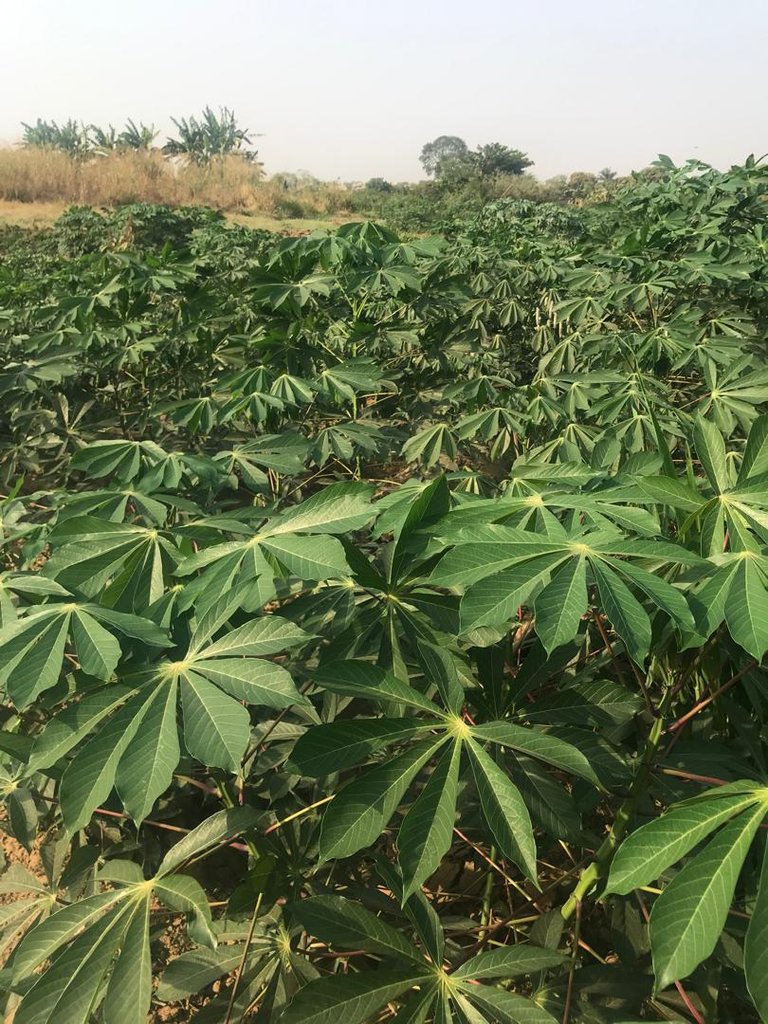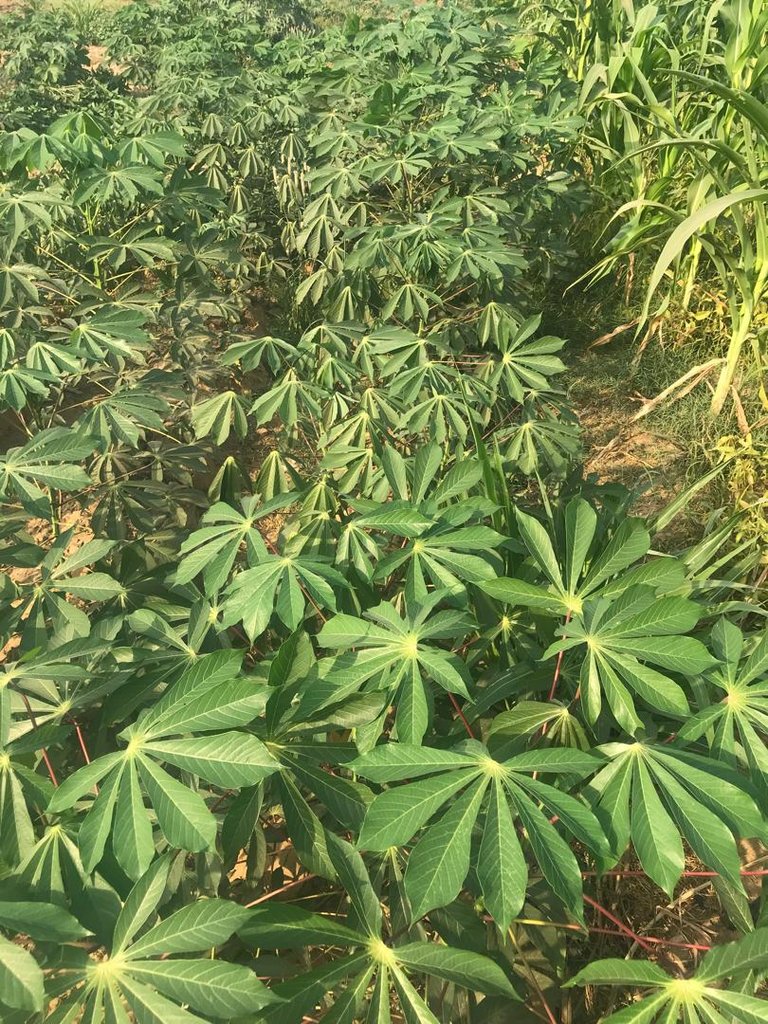Growing Cassava, Knowing the right Species, best practices and conditions for better yield
Hello Hive

When I think about the stress we went through last year to grow some cassava tubers, which is yet to yield anything, I feel so sad and bitter. We invested a lot and are already in loss.
Having given it our best, we have learned a lot along the road about the loopholes of conditions that needed to be met if we want some quality yield.

Yesterday we were at a cassava farm to check on its growth and carry out some cleaning exercises round the farm. Having seen how well this cassava has produced, I realized the challenges our own farms were facing. We got cutlasses and used them to clear the bushes surrounding this farm to keep away cow encroachment and fire outbreaks.
This exact casava we have seen a little while ago continues to impress me with it's growth.
The stems are now bigger and we are expecting to see some tubers any moment from now.
This is one of the best species of cassava I have seen so far. The plant is dark green especially the stem and leaves. The other species of cassava often have slender stems with reddish color. The bulk of work on ground for this casava is weeding to clear away grasses from within and without the plant until the period of harvest which will not be far away anymore. Within a year this will grow to give us some food.
Take a look at the thickness of the stem. The size of the stems often determines the size of the tubers that will be harvested thus far.
Hence, some of the things to note when growing cassava are these:
- The quality of the cassava species.
The quality of the cassava species can be seen in a growing cassava plant. If the stems are thick and growing properly, as these ones are, then we can be rest assured that it is a quality seed. We can then prepare and pick up tubers from these for planting next session. Whenever it will be time for this cassava harvest, you will all see how big the tubers that will be harvested from here will be.

- Age of Cassava Specie
The age of the cassava species is equally important in determining if it is a quality plant or not. We shouldn't be expected to plant a biennial cassava in this generation. This will be a total waste of time when growing tubers that will take that length of time. A lot of things can happen during such a duration. The tubers can get infected and rotten as they spend year in year out in the soil. An annual cassava tuber will have grown and produced food for us within one year rather than waiting that long.
Although I have equally grown an annual casava in my own farm the growth and yield are retarded because of the nature of the soil. Not all soil have the same fertility and the quality of soil here is the best that can be seen anywhere.
- Soil fertility and texture
The cassava species here has thrived so well because of the quality of soil. The soil here is highly fertile to the point that it requires no extra organic or inorganic fertilizer. All of these factors have contributed to the massive growth of the plant.
Comparing this with the commercial cassava I have grown in a different location, I can see the difference and realize the mistakes we have been making that have cost us a lot. Having spent over half a million on my cassava plantation, it is disheartening that we aren't expecting much yield for harvest.

Knowledge is indeed power and can save us a lot of time and resources. While the plans for this year's planting are still on, we are on the lookout for the best practices that will give us optimum yield.
Meanwhile, we are still working and taking care of this cassava plant in order for it to give us some quality stem for this year's planting.
Posted Using INLEO